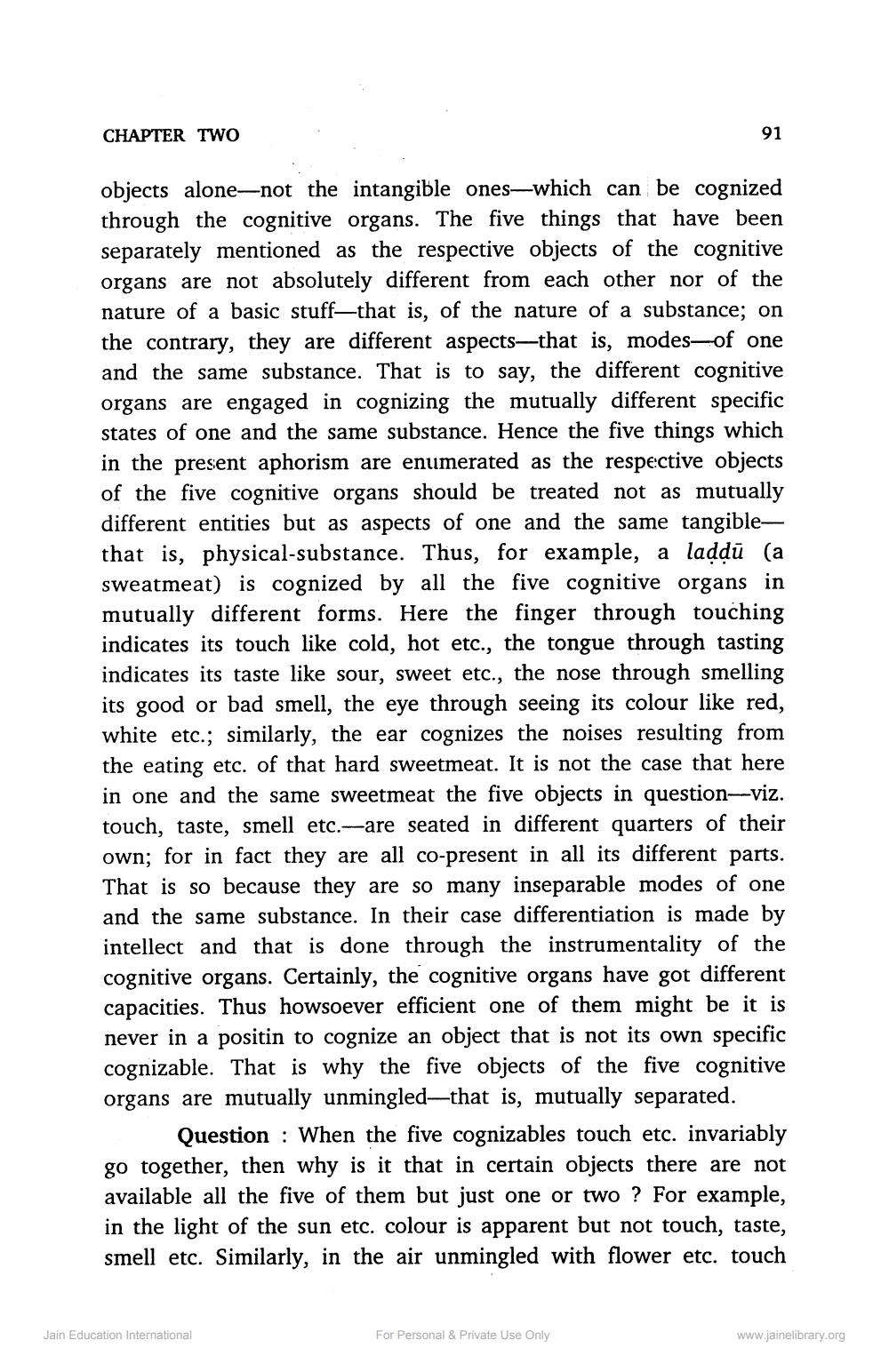________________
CHAPTER TWO
91
objects alone—not the intangible ones—which can be cognized through the cognitive organs. The five things that have been separately mentioned as the respective objects of the cognitive organs are not absolutely different from each other nor of the nature of a basic stuff—that is, of the nature of a substance; on the contrary, they are different aspects—that is, modes-of one and the same substance. That is to say, the different cognitive organs are engaged in cognizing the mutually different specific states of one and the same substance. Hence the five things which in the present aphorism are enumerated as the respective objects of the five cognitive organs should be treated not as mutually different entities but as aspects of one and the same tangiblethat is, physical-substance. Thus, for example, a laddū (a sweatmeat) is cognized by all the five cognitive organs in mutually different forms. Here the finger through touching indicates its touch like cold, hot etc., the tongue through tasting indicates its taste like sour, sweet etc., the nose through smelling its good or bad smell, the eye through seeing its colour like red, white etc.; similarly, the ear cognizes the noises resulting from the eating etc. of that hard sweetmeat. It is not the case that here in one and the same sweetmeat the five objects in question-viz. touch, taste, smell etc.--are seated in different quarters o own; for in fact they are all co-present in all its different parts That is so because they are so many inseparable modes of one and the same substance. In their case differentiation is made by intellect and that is done through the instrumentality of the cognitive organs. Certainly, the cognitive organs have got different capacities. Thus howsoever efficient one of them might be it is never in a positin to cognize an object that is not its own specific cognizable. That is why the five objects of the five cognitive organs are mutually unmingled—that is, mutually separated.
Question : When the five cognizables touch etc. invariably go together, then why is it that in certain objects there are not available all the five of them but just one or two ? For example, in the light of the sun etc. colour is apparent but not touch, taste, smell etc. Similarly, in the air unmingled with flower etc. touch
Jain Education International
For Personal & Private Use Only
www.jainelibrary.org




